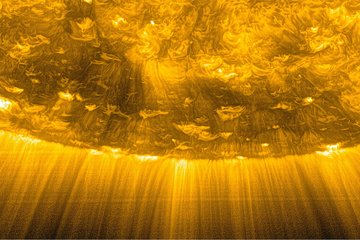All genres
1.
Journal Article
How the area of solar coronal holes affects the properties of high-speed solar wind streams near Earth: An analytical model. Astronomy and Astrophysics 659, p. A190 (2022)
2.
Journal Article
Variation in Cosmic-Ray Intensity Lags Sunspot Number: Implications of Late Opening of Solar Magnetic Field. The Astrophysical Journal 928, p. 157 (2022)
3.
Journal Article
Relationship Between Hard and Soft X-Ray Emission Components of a Solar Flare. Astrophysical Journal 728 (1), 4 (2011)
4.
Journal Article
Is the 3-D magnetic null point with a convective electric field an efficient particle accelerator? Astronomy and Astrophysics 513, A73 (2010)










